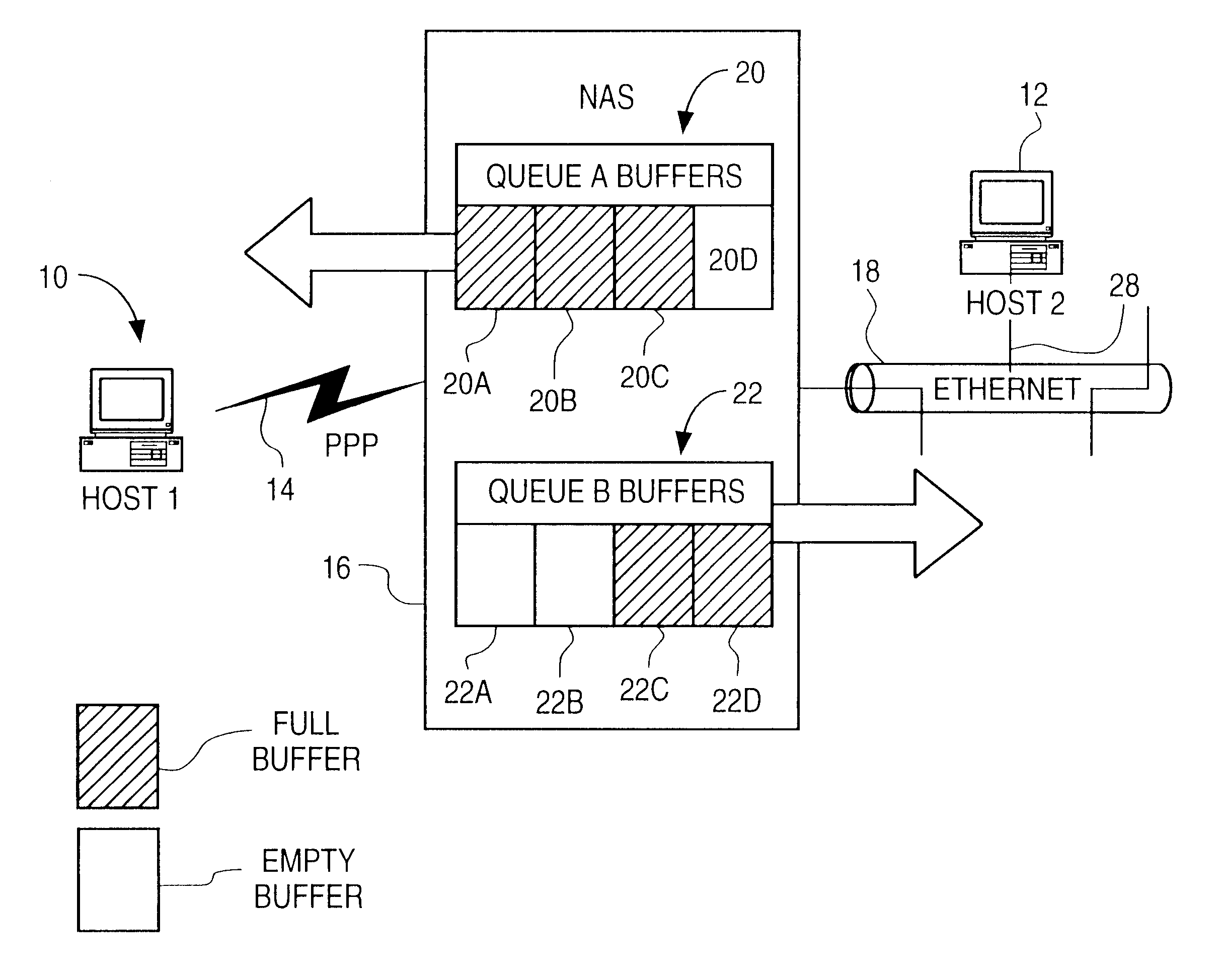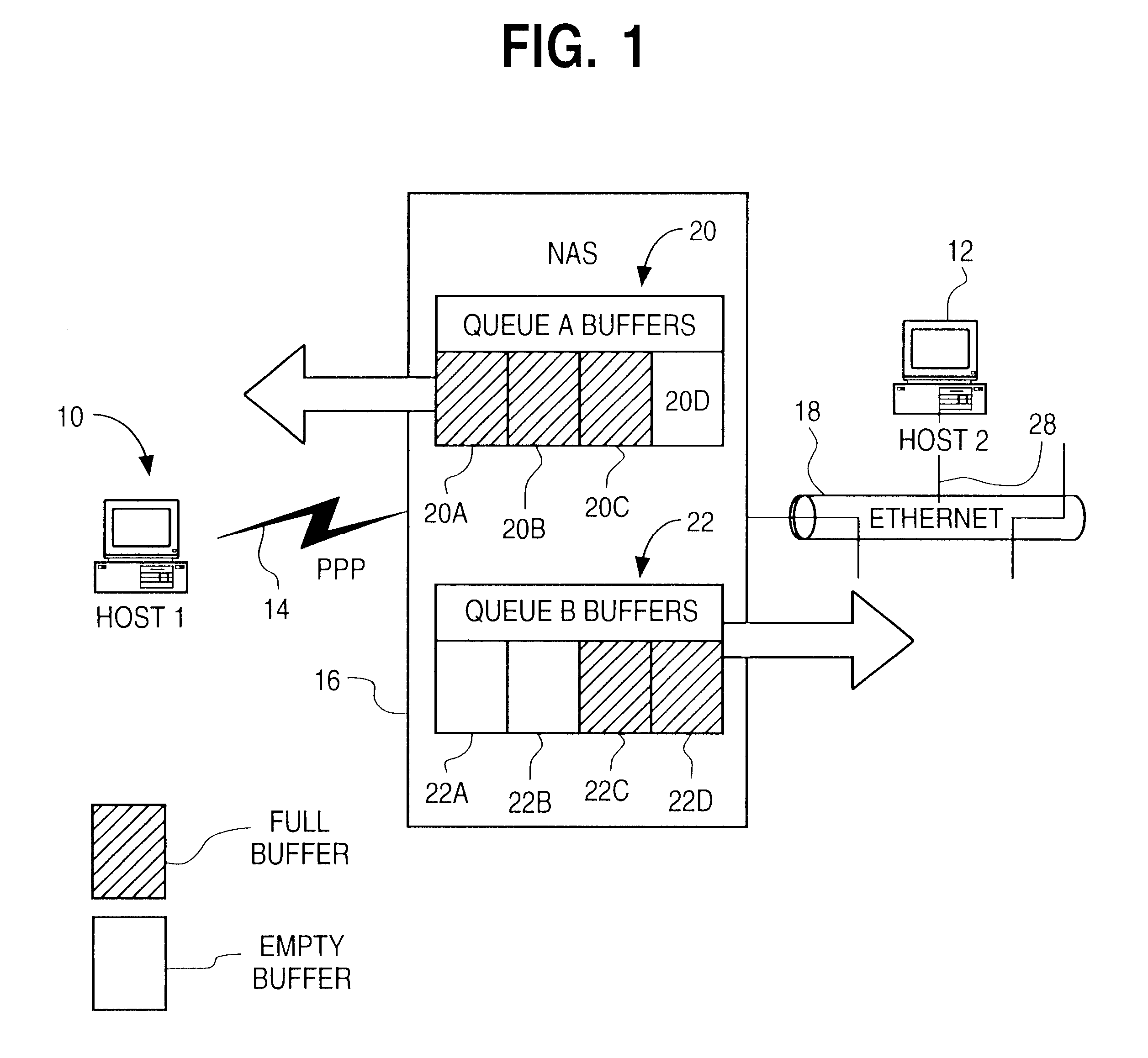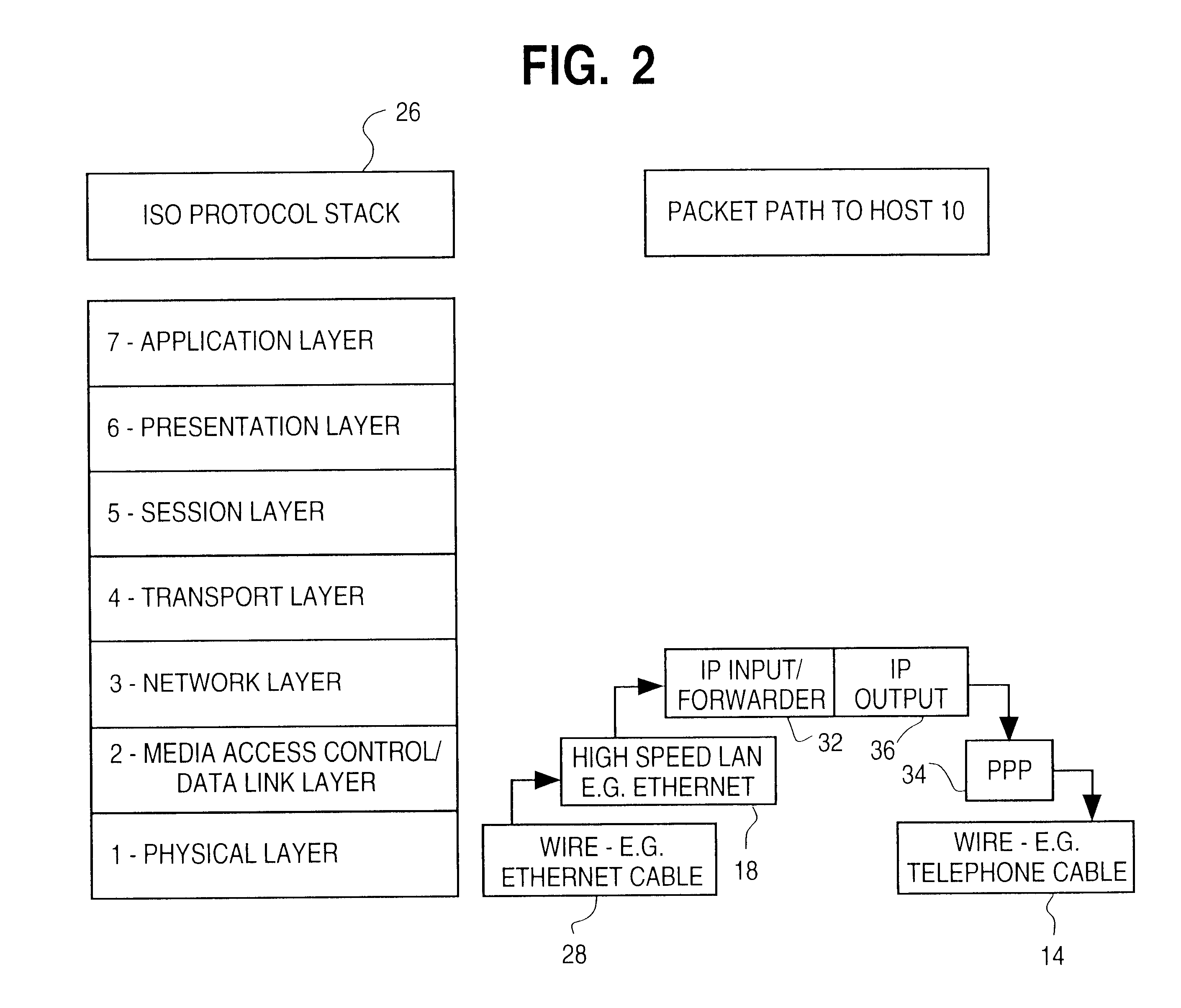Increased throughput across data network interface by dropping redundant packets
a data network interface and packet drop technology, applied in the field of telecommunications, can solve the problems of significant queuing of data directed from the high-speed lan/wan interface towards the low-speed modem interface, bottleneck limiting bandwidth, and the transmission rate of the data network is order of magnitude faster
- Summary
- Abstract
- Description
- Claims
- Application Information
AI Technical Summary
Benefits of technology
Problems solved by technology
Method used
Image
Examples
Embodiment Construction
Referring now to FIG. 1, a method is provided for increasing the throughput of data through a device such as a network access server NAS 16. The network access server 16 provides an interface between a first, relatively high speed network 18 such as an Ethernet local area network 18, and a second, relatively slower network 14 such as the Public Switched Telephone Network (PSTN). In the example of FIG. 1, a user operating computer 10 connects via a modem and PSTN network 14 to NAS 16, which provides access to the network 18. The nature or type of network 18 is essentially unimportant, and could be a corporate network, Internet Service Provider backbone network, Internet, or otherwise. Intermediate networks may be present as well. In a typical remote access exarnple, the user operating computer 10 wishes to exchange data or download files from a second computer 12 on the network 18.
The first and second networks 18, 14 will ordinarily have different nominal transmission rates. For exam...
PUM
 Login to View More
Login to View More Abstract
Description
Claims
Application Information
 Login to View More
Login to View More - R&D
- Intellectual Property
- Life Sciences
- Materials
- Tech Scout
- Unparalleled Data Quality
- Higher Quality Content
- 60% Fewer Hallucinations
Browse by: Latest US Patents, China's latest patents, Technical Efficacy Thesaurus, Application Domain, Technology Topic, Popular Technical Reports.
© 2025 PatSnap. All rights reserved.Legal|Privacy policy|Modern Slavery Act Transparency Statement|Sitemap|About US| Contact US: help@patsnap.com



